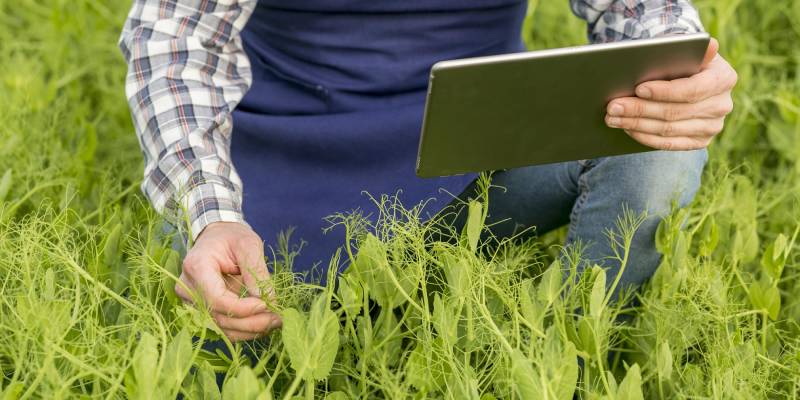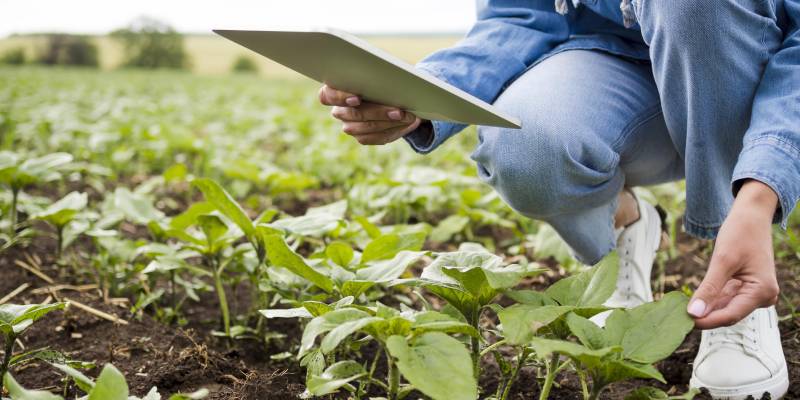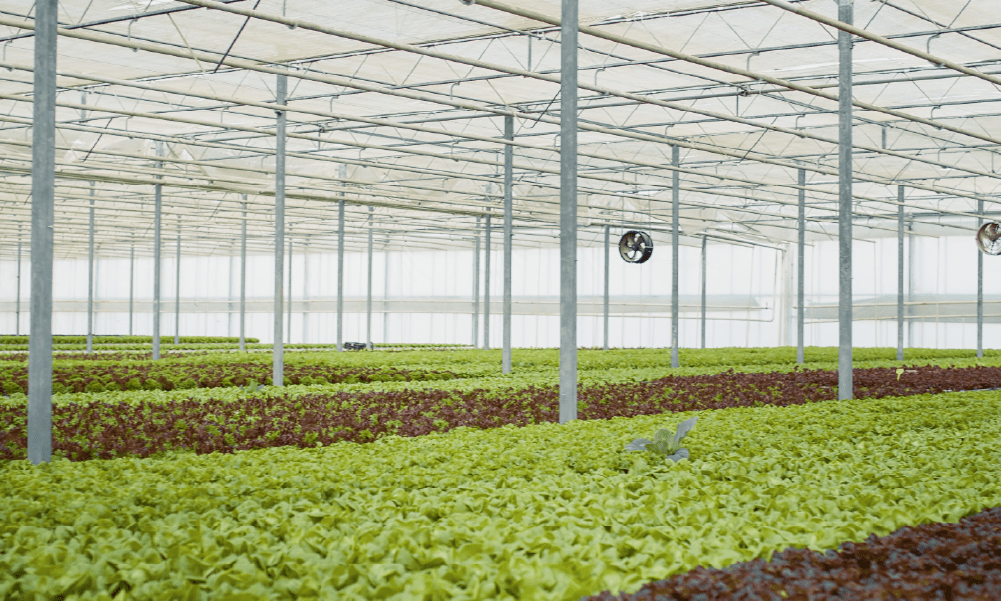Have you ever considered investing in agriculture but lacked the experience or resources to run a farm yourself? Managed farmland might be the perfect solution for you.
This guide will delve into the world of managed farmland, explaining its concept, benefits, considerations, and how to get started.
What is Managed Farmland?
It encompasses a range of agricultural practices aimed at maximizing the productivity and sustainability of cultivated land.
Unlike traditional farming methods, which often rely heavily on chemical inputs and monoculture cropping, managed farmland employs holistic approaches to soil, water, and crop management.
Types of Managed Farmland
Discover the various categories and classifications of managed farmland.
- Crop Farming: Cultivating land for the purpose of growing various crops such as grains, fruits, and vegetables.
- Livestock Farming: Rearing animals like cattle, poultry, and pigs for meat, dairy, and other products.
- Mixed Farming: Combining crop and livestock farming on the same piece of land to optimize resources and productivity.
The Role of Managed Farmland in Agriculture
Managed farmland is essential for meeting the growing global demand for food while minimizing the environmental impact of agricultural activities.
By implementing sustainable practices such as crop rotation, cover cropping, and integrated pest management, farmers can improve soil health, conserve water resources, and reduce reliance on synthetic fertilizers and pesticides.
Benefits of Managed Farmland
Let’s explore the Benefits of Managed Farmland:
Environmental Benefits
Managed farmland offers a range of environmental benefits that contribute to the sustainability of agricultural practices:
- Carbon Sequestration: Crops and vegetation on managed farmland absorb carbon dioxide, aiding climate change mitigation by storing carbon in the soil and biomass.
- Biodiversity Conservation: Proper practices like crop rotation and hedgerow planting create diverse habitats, supporting various plant and animal species, thus enhancing ecosystem resilience.
- Soil Health Improvement: Sustainable techniques such as cover cropping and organic amendments enhance soil fertility and structure, reducing erosion and preserving soil quality.
- Water Conservation: Techniques like drip irrigation and rainwater harvesting conserve water, minimizing the environmental impact of farming and promoting water stewardship.
- Habitat Restoration: Managed farmland serves as wildlife corridors, aiding habitat restoration and enhancing biodiversity in fragmented landscapes.
Economic Benefits
Managed farmland plays a crucial role in fostering economic development and prosperity:
- Income Generation: Farmers bolster local economies and livelihoods by selling agricultural products like crops, livestock, and value-added goods.
- Job Creation: Agriculture fuels employment opportunities throughout the supply chain, from farm labour to equipment manufacturing, fostering economic stability in rural areas.
- Rural Development: Vibrant agricultural sectors attract investments in infrastructure, education, and healthcare, enhancing rural living standards while preserving cultural heritage.
- Diversification Opportunities: Farmers expand revenue streams by incorporating activities like agroforestry, aquaculture, or agritourism into their farmland operations, accessing new markets.
- Value-Added Products: Initiatives such as farm-to-table restaurants and artisanal food products amplify the value of agricultural goods, bolstering profitability and consumer demand.
Social Benefits
Managed farmland serves as a cornerstone of food security, community engagement, and cultural preservation:
- Food Security: Ensures a consistent supply of nutritious foods, reducing reliance on imports and addressing hunger and malnutrition.
- Community Engagement: Farmers interact with local communities through farmers’ markets and educational programs, strengthening ties between producers and consumers and enhancing agricultural awareness.
- Cultural Preservation: Agriculture preserves cultural traditions and culinary practices, fostering cultural diversity and passing down knowledge through generations.
- Educational Opportunities: Offers hands-on learning experiences through farm tours and workshops, educating students and the public on sustainable agriculture and environmental conservation.
- Community Resilience: Local food systems enhance community resilience by decreasing dependence on global supply chains and promoting self-sufficiency during crises.
Health Benefits
Discover the positive impacts of managed farmland on human health and well-being.
- Fresh, Nutritious Food: Locally grown produce from farmland is fresher, tastier, and more nutritious than imported or processed foods, improving public health and reducing diet-related diseases.
- Physical Activity and Well-being: Farming activities like planting, harvesting, and tending livestock boost physical fitness, mental well-being, and connection to nature, enhancing the quality of life for individuals and communities.
Key Components of Managed Farmland

Understanding the key components of managed farmland is essential for implementing effective farming strategies.
These are:
- Soil Management: Focuses on maintaining soil health through practices like soil testing, nutrient management, and erosion control to support optimal crop growth.
- Crop Rotation: This involves alternating crops grown in a field to break pest cycles, improve soil fertility, and reduce weed pressure.
- Water Management: Ensures efficient use of water resources through techniques such as drip irrigation, rainwater harvesting, and soil moisture monitoring.
- Integrated Pest Management (IPM): Combines biological, cultural, and mechanical methods to control pests while minimizing reliance on chemical pesticides.
- Nutrient Management: Optimizes nutrient levels in the soil through soil testing and targeted fertilization to support healthy crop growth and minimize nutrient runoff.
- Conservation Practices: Implement strategies like conservation tillage, buffer strips, and agroforestry to reduce soil erosion, protect water quality, and enhance biodiversity on farmland.
8 Key Factors to Consider Before Investing in Agricultural Farmland
Investing in agricultural farmland can be a lucrative venture, but it’s essential to carefully evaluate several factors before making a decision.
Here are eight key considerations to keep in mind:
- Location: Close to markets, transport, and a suitable climate for profitable farming operations.
- Soil Quality: Fertile, well-drained soil with minimal erosion risk for optimal crop growth.
- Water Access: Reliable water sources and rights for irrigation purposes on the farmland.
- Climate: Local weather patterns are assessed for risks like droughts, floods, and temperature extremes.
- Crop Demand: Research profitable crops with high market demand suitable for the farmland.
- Regulations: Comply with land use restrictions and zoning laws to avoid legal complications.
- Infrastructure: Essential services like roads, utilities, and storage are available for efficient farming operations.
- Financial Analysis: Evaluate ROI based on purchase price, operating costs, and potential income from crops.
Getting Started with Managed Farmland
Learn the essential steps and considerations for initiating a managed farmland venture.
Research and Planning
Delve into the importance of thorough research and strategic planning in managing farmland effectively.
- Identify Your Goals: Determine your objectives for managing farmland, whether it’s sustainable agriculture, profit generation, or lifestyle farming.
- Assess Resources: Evaluate factors such as land availability, soil quality, water access, and climate suitability for farming.
- Learn Best Practices: Educate yourself on modern farming techniques, environmental stewardship, and regulatory requirements.
Acquiring Land
Understand the process of acquiring farmland, whether through purchase or lease agreements.
- Purchase or Lease: Decide whether to buy or lease farmland based on your financial resources and long-term plans.
- Location Considerations: Choose a location with favourable soil conditions, adequate water resources, and proximity to markets or infrastructure.
Establishing Operations
Explore the foundational elements of setting up and managing farm operations efficiently.
- Infrastructure Development: Invest in essential facilities such as irrigation systems, fencing, storage buildings, and equipment.
- Crop Selection: Select crops or livestock breeds that are well-suited to your climate, soil type, and market demand.
- Implementing Management Practices: Adopt sustainable farming methods, pest and disease control measures, and animal welfare standards.
Challenges and Solutions
Addressing common challenges faced in managing farmland and proposing solutions.
Pest and Disease Management
Pests and diseases pose significant threats to crop health and productivity.
Managed farmland employs integrated pest management (IPM) strategies, including biological control, crop rotation, and use of resistant crop varieties, to minimize pest damage while reducing reliance on chemical pesticides.
Climate Change Adaptation
Climate change is altering growing conditions for crops and exacerbating weather extremes such as droughts, floods, and heatwaves.
Managed farmland practices such as conservation tillage, agroforestry, and soil carbon sequestration help farmers adapt to changing climatic conditions and build resilience against weather-related risks.
Best Practices for Managing Farmland

This section will provide practical tips for implementing effective farmland management strategies.
Utilizing Technology
Advances in agricultural technology, such as precision farming, remote sensing, and data analytics, offer new opportunities for improving farm productivity and sustainability.
Managed farmland leverages these tools to monitor soil and crop health, optimize resource use, and make data-driven decisions for better farm management.
Continuous Learning and Improvement
Successful farmland management requires ongoing education and skill development. Farmers can benefit from participating in extension programs, attending workshops and conferences, and networking with other growers to exchange knowledge and best practices for sustainable agriculture.
Why Choose Sanjeevani Farms Managed Farmland near Bangalore?
For the best managed farmland near Bangalore, consider Sanjeevani Farms. They merge nature and technology for a peaceful escape from city life, integrating sustainable farming practices. Their mission is to promote organic farming and responsible land management, creating a balanced ecosystem that benefits both the environment and the community.
Their eco-friendly projects like SilverWoods, GreenVista, and Tapovan offer luxurious amenities, sustainable practices, and high investment returns. Choose them for a greener future, premium facilities, and a peaceful retreat from city life.
The speciality of Sanjeevani Farms Managed Farmland:
- Eco-friendly: Promoting greener practices.
- Luxury: Enjoy premium facilities in natural settings.
- Investment: Secure, with rising land values.
- Community: Join a sustainable living community.
- Returns: Maximize profits with advanced techniques.
- Retreats: Escape city life in serene surroundings.
Conclusion
Managed farmland plays a vital role in modern agriculture by promoting sustainable practices that enhance productivity, protect the environment, and support rural livelihoods. By adopting holistic approaches to soil, water, and crop management, farmers can maximize the potential of their land while preserving natural resources for future generations.
FAQs
Common crops include wheat, corn, rice, soybeans, vegetables, and fruits, depending on the region and climate.
Investing in managed farmlands around Bangalore offers a promising blend of sustainability and financial stability. With proximity to urban amenities, attractive investment prospects, and a focus on eco-friendly practices, it’s a wise choice for those seeking a balanced lifestyle amidst nature’s tranquility.
Through practices like agroforestry, habitat restoration, and crop diversification, it can support diverse plant and animal species.
Government policies related to land use, agricultural subsidies, conservation programs, and environmental regulations influence farmland management practices and outcomes.
Yes, organic farming practices, which prioritize soil health, biodiversity, and natural inputs, are a type of managed farmland.
Consumers can support sustainable agriculture by choosing organic and locally grown products, advocating for policies that promote sustainable farming practices, and reducing food waste.





